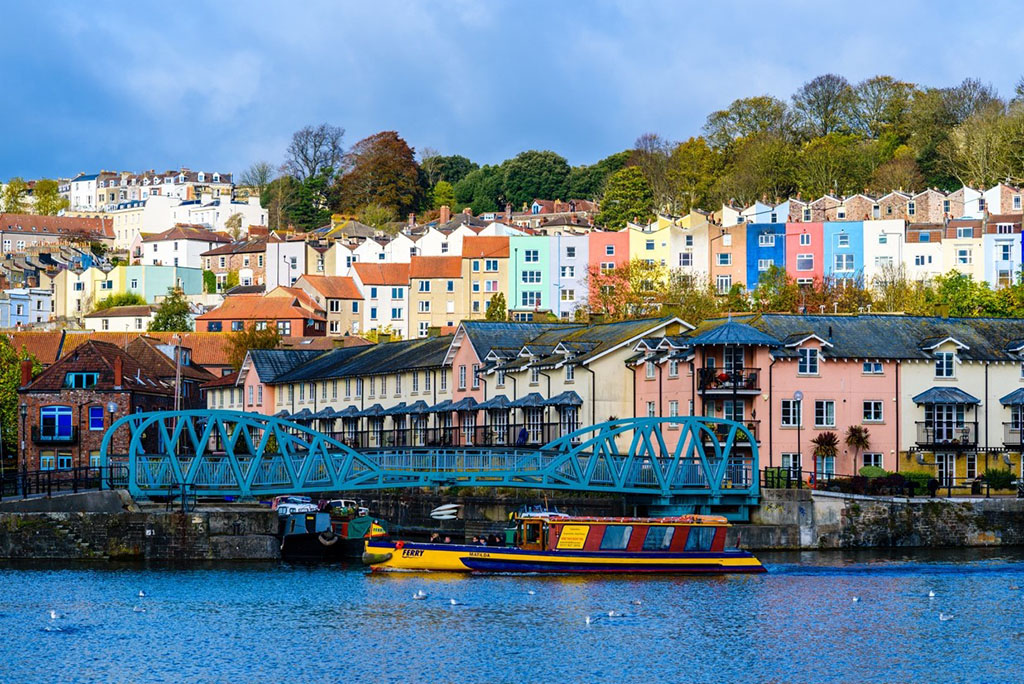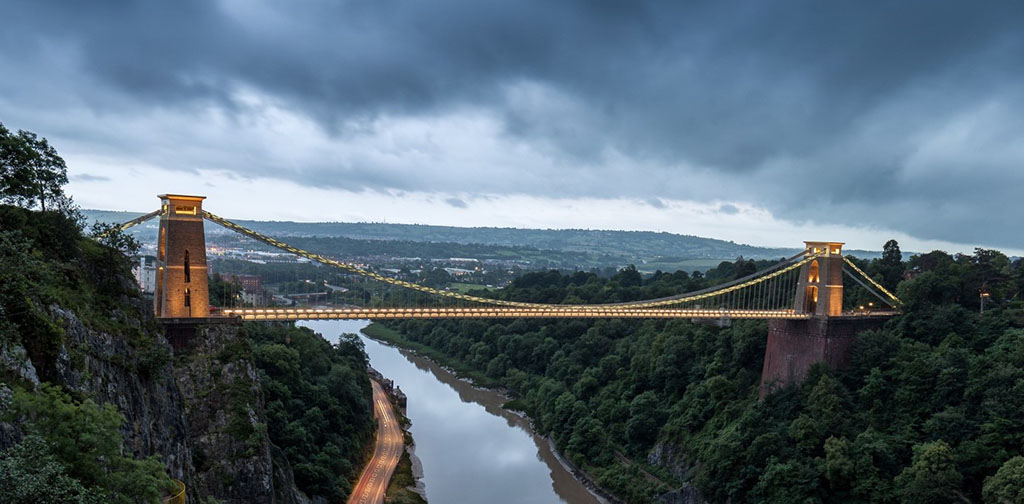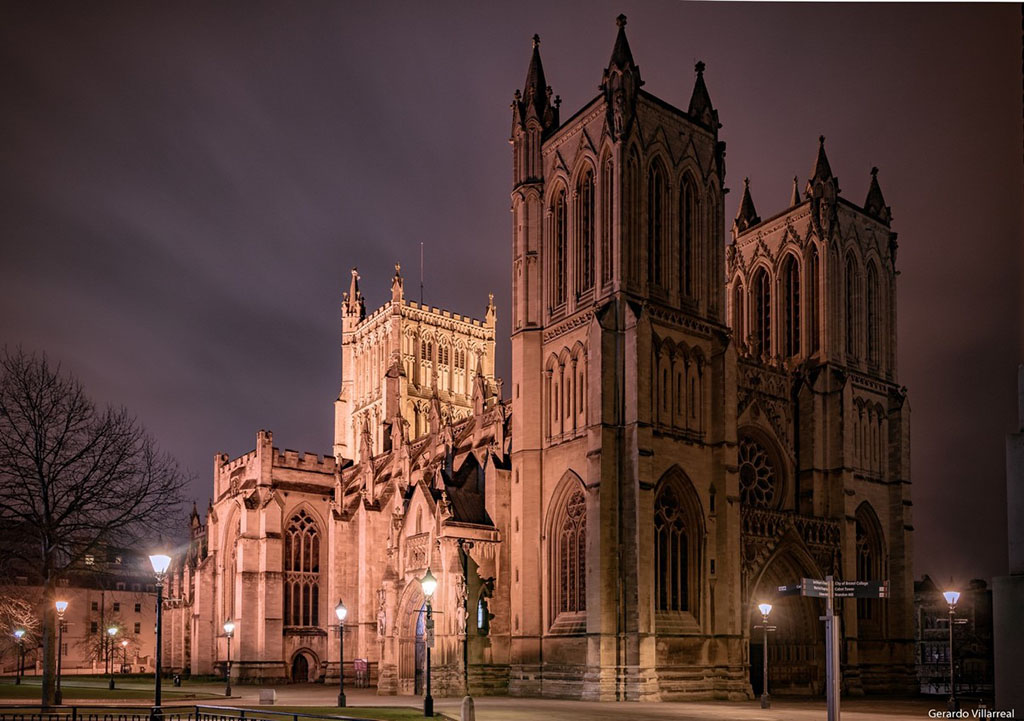Language study trip England: Bristol

Bristol, the largest city in the south-west of England, is often neglected and underestimated by tourists and language students - and definitely wrongly so. Over the last few decades, the city has become a mecca for creatives, culture and art lovers, offering a wealth of historical evidence of bygone eras and yet keeping pace with modernity. M Shed, for example, the magnificent history museum, as well as the completely renovated harbor area, the culinary delights, the murals by street artist Bansky, the many historic buildings, sights and the truly varied nightlife leave nothing to be desired during a language study trip to Bristol.

Which language school in Bristol to choose?
Almost all of Bristol's language schools are located around the city center and are therefore ideally situated for exploring the city or strolling along the harbor after English lessons. When choosing a language school, location is therefore not necessarily the most important selection criterion, but rather the range of courses on offer, the maximum number of students, the school's infrastructure, the distance to the accommodation and the composition of the students. You can find out which selection criteria are important for a language school in Bristol or England in general in the guide "Language courses in England" which will provide you with comprehensive information about planning and organizing a language study trip. It can also be helpful to read the opinions of former language students who have already been to one of the Bristol language schools and share their experiences with you. You can get such reviews directly from the language schools, from the language travel agencies, on social networks, on Ausbildung-Weiterbildung.ch or via the Google search of the individual language schools in Bristol.

Where to live in Bristol?
Life in Bristol mainly takes place along and to the north of the harbor, where you will also find the university, art galleries, the aquarium, large shopping centers, restaurants, bars and many sights. It is therefore very pleasant to live in this area, although accommodation with host families is usually a little further away from the city center. This is because Bristol is a large city with over 430,000 inhabitants. It can therefore happen that host families live up to 50 minutes away from the language school by public transport and you will have to travel for almost two hours every day. The accommodation is not always this far away; host families are often just a 20-minute walk from the language school. In most cases, however, you cannot decide how far away your host family should live, but some organizers offer the option of staying with families that are less far away by paying an additional fee. Please discuss this option directly with the language travel provider.
As an alternative to accommodation with a host family, you can also stay in a studio, apartment or student residence during your language study trip in Bristol. These are usually very centrally located within walking distance of the school, but are usually only open to students aged 18 and over. Depending on the type of accommodation, you will live in a single or double room and in some cases have your own bathroom or share this, as well as the kitchen and lounge, with other residents, usually also language students or students. In studios, you will have your own bathroom and a small kitchenette, but no shared facilities. In such a case, it is rare to have a quick chat over breakfast or dinner, which means that social contact with like-minded people can sometimes suffer when staying in a studio.

What to experience in Bristol!
Bristol's port was already an important trading hub in the Middle Ages and developed into one of the largest ports in the kingdom. Sugar, rum and cotton from the New World reached Europe via Bristol, and African slaves were loaded onto ships bound for America here. Business boomed and brought immense wealth to the city, as many buildings in the area, especially in the Clifton district, still bear witness to today. The historic buildings from the 18th and 19th centuries in this part of the city are well worth a visit and are still among the most prestigious addresses in the city, especially Royal York Crescent and Cornwallis Crescent, which stand out from the rest of the city. The Red Lodge, Carbot Tower and Gregorian House are also extremely interesting historical buildings, all of which can be visited free of charge.
You should also definitely visit the Clifton Suspension Bridge, which pedestrians can enter free of charge. The Durnham Down and Clifton Down Parks are also close by and are great places to relax. The Giant's Cave at Clifton Observatory costs an entrance fee, but is well worth a visit.
If you are on a language study trip to Bristol, the SS Great Britain is a must-see. The steamship from the middle of the 19th century is the most technically advanced and also the largest steamship ever built. Once almost 100 meters long, the luxurious Atlantic steamer can now be visited after more than 30 years of restoration work. If you can't get enough of ships, you should also visit the replica of the Matthew, the ship of Newfoundland explorer John Cabot (actually Giovanni Caboto), who set off on his voyage to America from Bristol in 1497. In addition to tours of the ship, tours of the harbor can also be booked on certain dates.
If you want to find out a little more about the history of Bristol, the M Shed is the place to go. The museum, located in the harbor, is by no means boring, but shows the history of the city in many facets - during the slave trade or the Second World War, it shows vehicles from different eras such as old buses or locomotives and you can also marvel at a thecodontosaurus. In addition, a variety of different activities are offered in summer, from a harbor crane ride to experiencing the old Pyronaut fireboat in action to steam locomotive rides, the M Shed offers a lot of varied events.
Art lovers can visit Spike Island and the Arnofini, those who would like to find out more about the underwater world in the area can visit the Bristol Aquarium and those who would rather explore the city can take part in guided tours, such as the Bristol Highlights Walk, or go on an independent MP3 tour. Boat tours can also be booked at the harbor.
Vistit Bristol informs you about all events and festivals in Bristol and the surrounding area, such as the Shakespeare Festival, the Harbour Festival, the International Balloon Fiesta or the Encounters film festival. You can also find lots of great tips for restaurants and bars on this website, so you won't miss out on any events or culinary highlights. If you're in the mood for a night out, don't miss the Grain Barge and the Cider Bar Apple, as well as an evening at Colston Hall or, if you like theater, one of England's oldest theaters, the Bristol Old Vic.

How to get around in Bristol?
In Bristol, you can easily get around the city by bike during your language study trip. If you are only staying in the city for a short time and don't want to buy your own bike, you can also hire one for the duration of your stay. The tourist information office can provide you with information on all rental and cycling stores, as well as the wide range of bike tours on offer. Bristol is one of the most bike-friendly cities in Europe, so it is not surprising that there are also guided bike sightseeing tours and very good cycle paths within the city.
If you don't fancy cycling, you can explore the city on foot or use public transport. Bus routes and timetables can be found at the Tourist Information Center. Sightseeing tours on the double-decker bus are of course also possible in Bristol and are an interesting way to get to know the city and its sights from the comfort of the open top of the bus.

What can you afford in Bristol?
A four-week standard language course in Bristol will cost you between £1,500 and £1,900, with around 20 weekly lessons and accommodation with a host family in a single room including half board. Accommodation in residences, apartments and studios is usually more expensive. In addition, accommodation of this type does not include meals, so you will have to add the cost of meals to your budget. The cost of meals can of course vary greatly depending on how often you want to eat out, what type of cuisine you prefer and how lavish you want your meals to be. You can get a simple, cheap and good lunch at the Canteen, St. Nicholas Market, Olive Shed, Pieminister, Gallimaufry, Thali Café. From £3 to £11, you can get every imaginable treat from pies and curries to roast pork, tapas and slow food. The Boston Tea Party and Bagel Boy offer good and cheap sandwiches and bagels.
You pay between £1 and £1.50 for bus rides in the city center, depending on the number of stops, bikes can be rented for between £12 and £20 per day and the Bristol Ferry Boat Company offers day tickets for £6. A little more expensive is the tour of the SS Great Britain, which is quite expensive at around £14 entry. However, the M Shed, Carbot Tower, Red Lodge, Bristol Museum & Art Gallery, Matthew, Blaise Castle House Museum and many other facilities and attractions are free. Find out about current offers and prices at the local tourist information office. There you can also buy many tickets for tours, attractions and excursions as well as day, week and monthly tickets for city buses.
